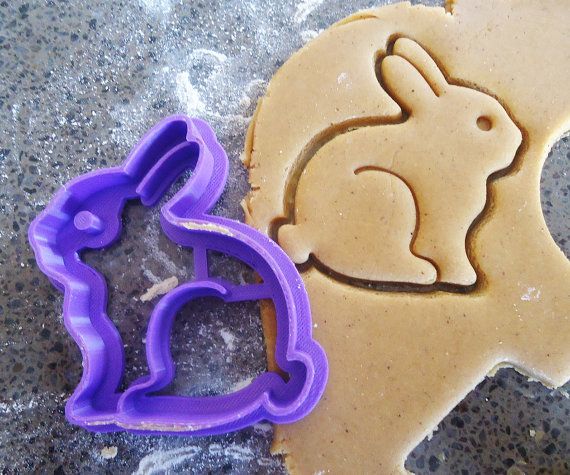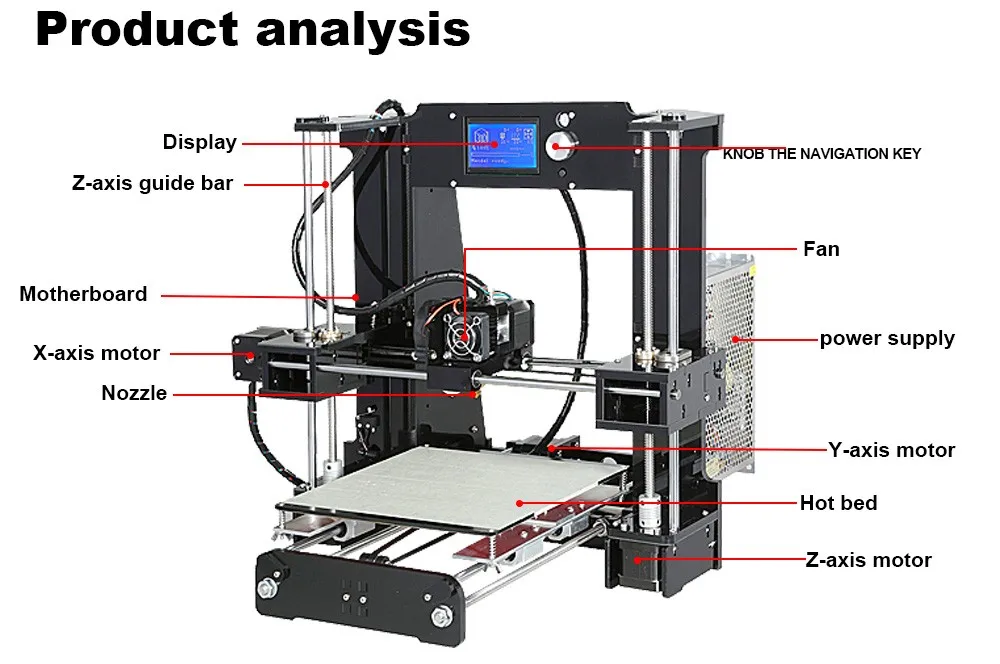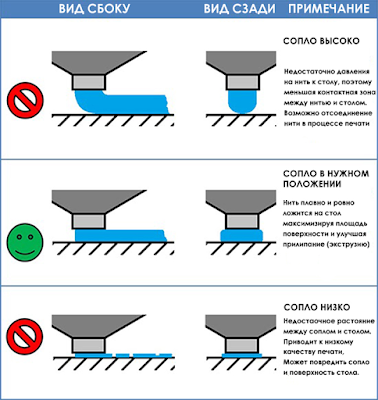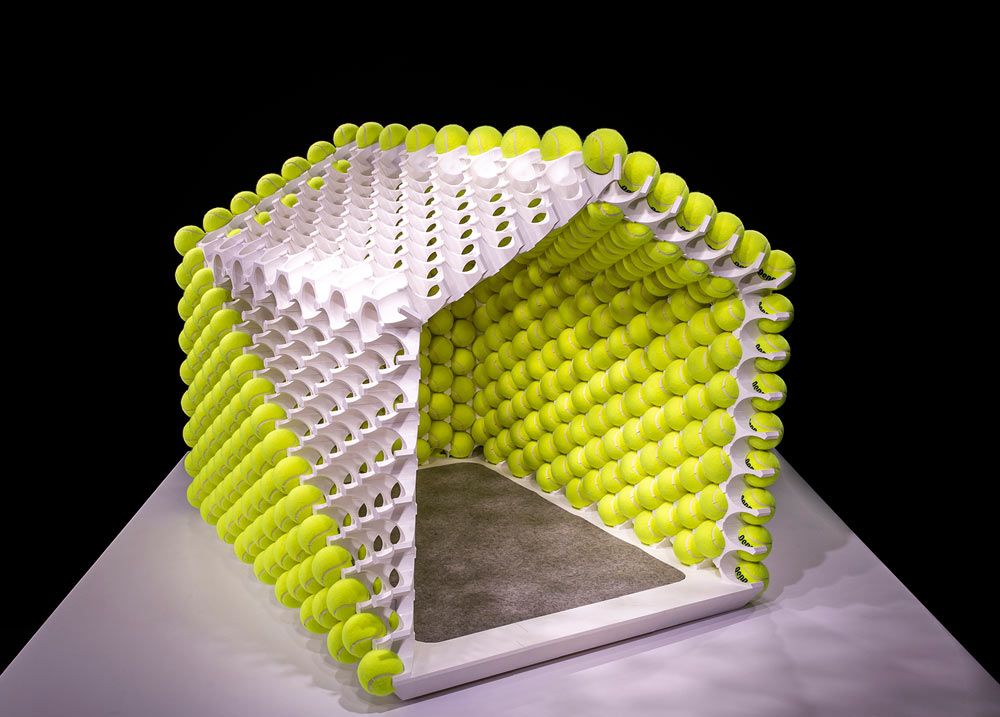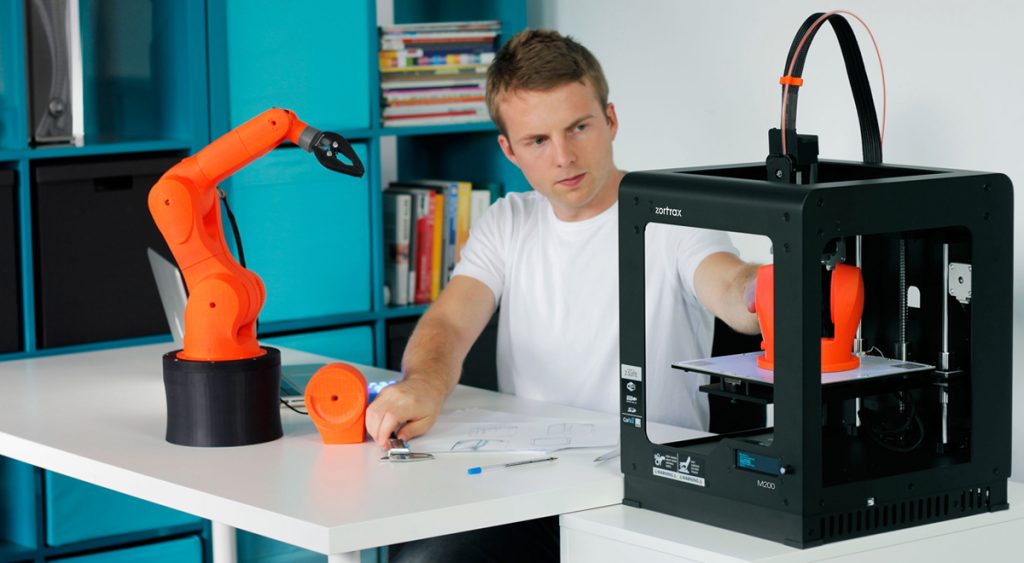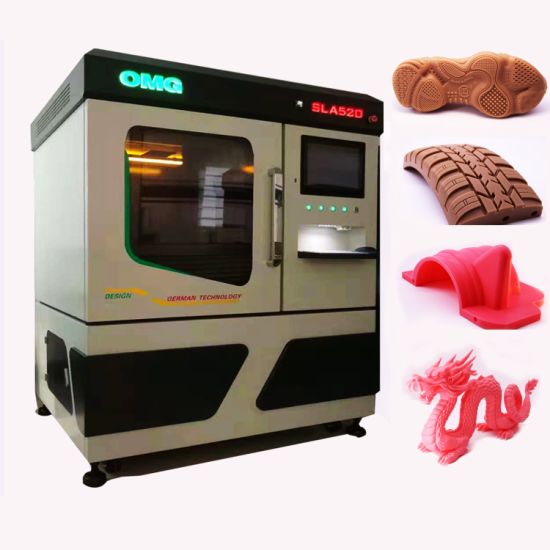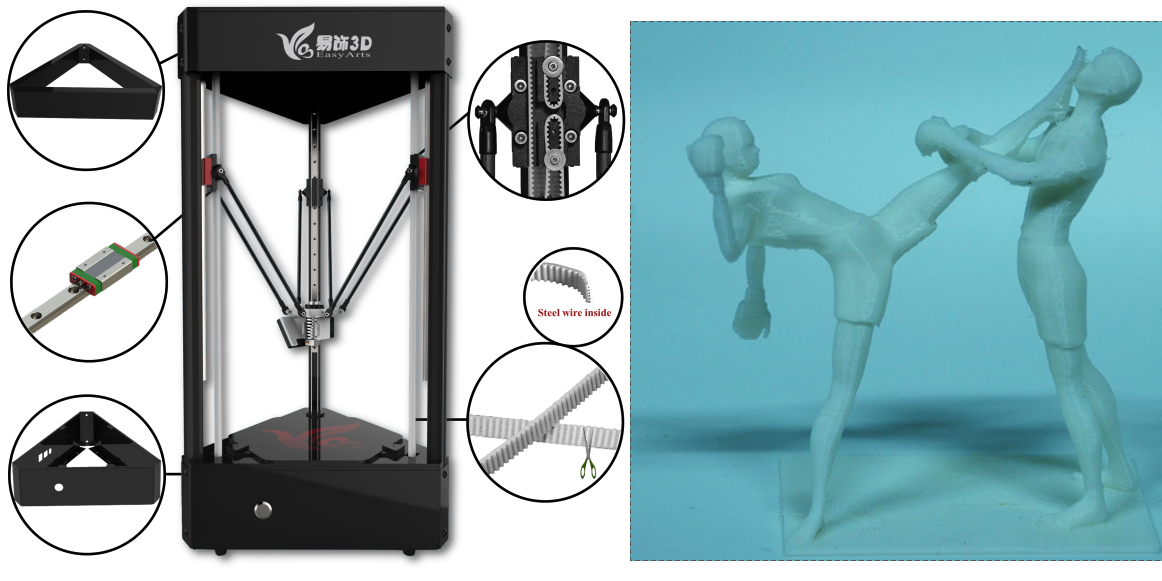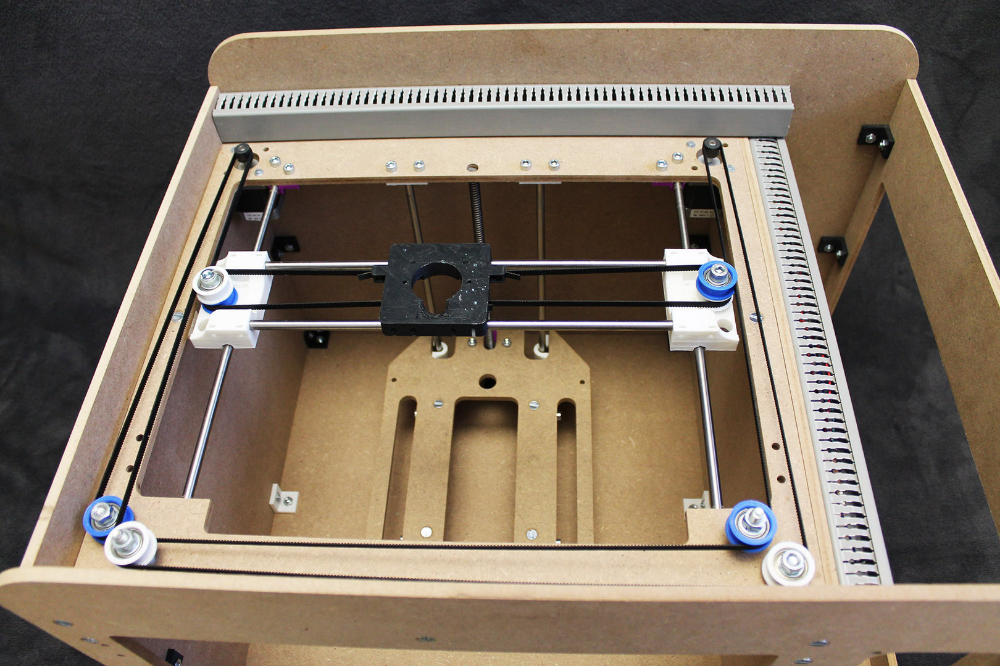3D printing food safe plastic
The Essential Guide to Food Safe 3D Printing
3D printing offers unparalleled design freedom to produce custom parts and complex or organic shapes that would be costly or impossible to manufacture with traditional manufacturing methods.
These benefits can be compelling for a range of food-related applications. However, if 3D printed parts are intended for food contact items, you‘ll have to consider safety practices and regulations to avoid contact with toxic substances and prevent the buildup of harmful bacteria.
Food safe 3D printing is possible and the variety of materials approved as food safe is increasing, but there is a high degree of ambiguity around the workflows and finding the appropriate applicable regulations can be a challenge.
Read on for an introduction to food safety, food safety considerations for 3D printing, and a variety of methods to produce food safe products with common 3D printing processes, including stereolithography (SLA), fused deposition modeling (FDM), and selective laser sintering (SLS).
Please note
No Formlabs resins are food safe unless users take additional steps.
Video Guide
Having trouble finding the best 3D printing technology for your needs? In this video guide, we compare FDM, SLA, and SLS technologies across popular buying considerations.
Watch the Videos
To begin, it’s important to clarify a few key terms:
- Food grade means that the material is either safe for human consumption or permitted to come in contact with food.
- Food safe means that a food grade material meets the requirements determined by the intended use and will not create a food-safety hazard.
- Food contact surfaces include any surface that may come into direct contact with food. These surfaces must be made of nontoxic materials and designed to withstand the environment of their intended use, including exposure to cleaning compounds, sanitizing agents, and cleaning procedures.
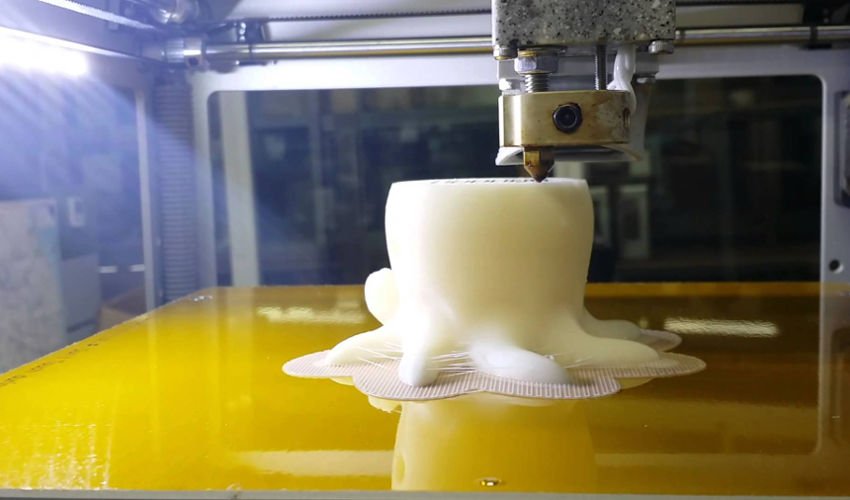
Food grading and food safety concern a specific way to ingest parts, called migration. Particles as small as a few nanometers and up to several hundred nanometers may get transferred each time various materials encounter with each other, for example from components of the 3D printer to the 3D printed object, and from the object to the food.
Because migration levels are very low on occasional contact, food grading typically concerns items that are in prolonged contact with food such as containers, straws, utensils, plates, and food molds. Different testing institutions will adhere to different government-imposed risk tolerances and approved substances, which for the US is described by the FDA CFR 21 and for the EU in guidelines 10/2011.
Look for these labels indicating FDA and EU approval. Beware that a material being ‘compliant with’ doesn’t mean that it is explicitly approved by the institutions, so always check the technical datasheets for a certificate.
To be considered food safe according to the FDA Food Code, a material has to meet the following requirements:
- No migration of deleterious substances
- Does not impart colors, odors, or tastes
- Safe under normal use conditions
- Durable, corrosion-resistant, and nonabsorbent
- Sufficient in weight to withstand repeated washing
- Finished to have a smooth, easily cleanable surface without breaks and sharp internal angles
- Resistant to pitting, chipping, crazing, scratching, scoring, distortion, and decomposition
- Accessible to inspection
Any FDA or EU approved material includes not only the raw polymer but also the additives or masterbatch.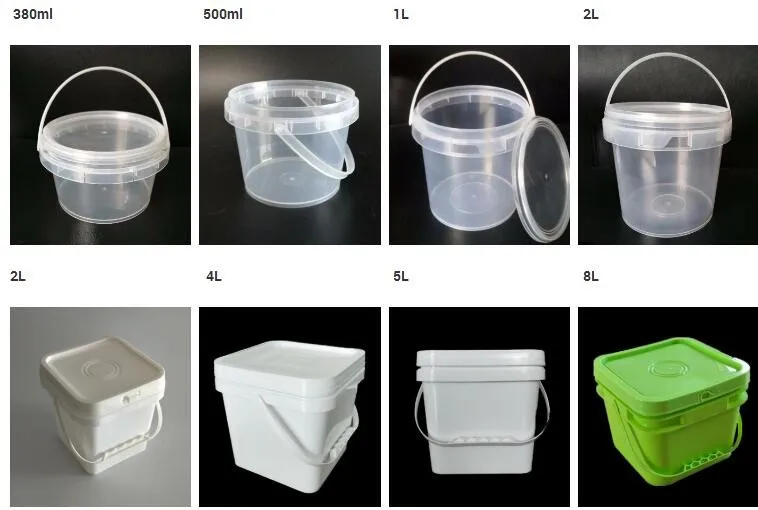 These might contain components such as plasticizers, impact and heat distortion modifiers, UV-stabilizers, flame retardants, anti-fouling, anti-static, anti-slip, foaming and clarifying agents, anti-oxidants, aromatic nucleators, carbon alloys, phosphorescents, fillers, thickeners, chain extenders, metal deactivators, dyes, and a carrier resin.
These might contain components such as plasticizers, impact and heat distortion modifiers, UV-stabilizers, flame retardants, anti-fouling, anti-static, anti-slip, foaming and clarifying agents, anti-oxidants, aromatic nucleators, carbon alloys, phosphorescents, fillers, thickeners, chain extenders, metal deactivators, dyes, and a carrier resin.
A 3D printed part can turn into a petri dish squirming with bacteria within weeks. Even though some materials will survive the dishwasher, so will dangerous bacteria such as E. coli and salmonella that live in the little nooks and crannies. Some toxic molds find favorable growth conditions on several types of plastic and are hard to remove. Neither cleaning with bleach nor microwaving your polymers is an option for eliminating germs.
While bacteria buildup might not be an issue for disposable items, if you’re planning to create a part for long-term use, using a food safe coating is highly recommended.
The best option to reduce the risk of particle migration and bacteria buildup is by dip coating the 3D printed parts with a food grade epoxy or polyurethane resin, such as Masterbond’s EP42HT-2FG or ArtResin or an FDA approved PTFE (known as Teflon®) to seal their surface.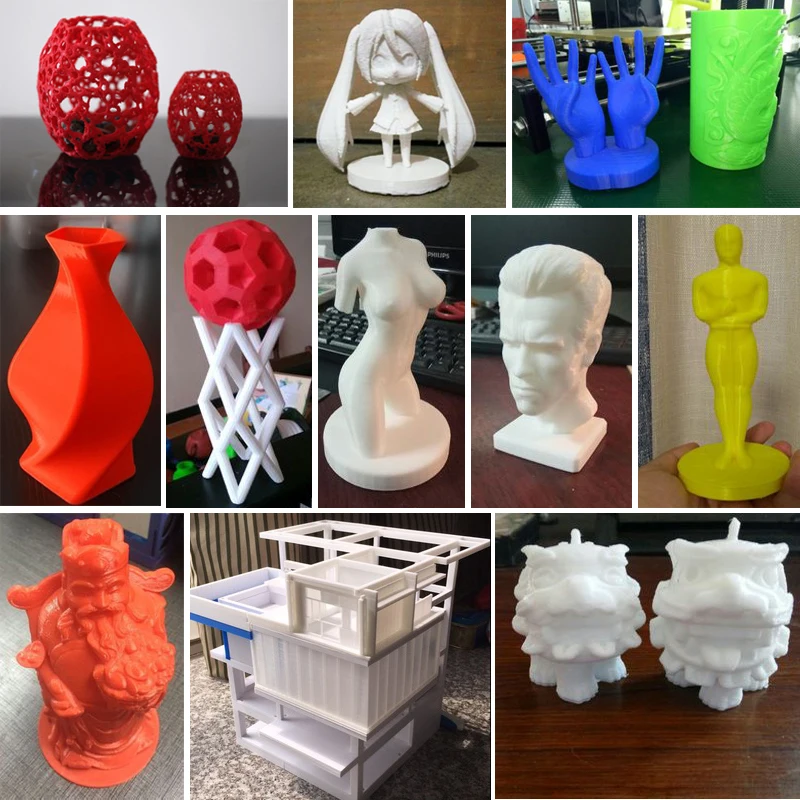
However, note that coating also doesn’t guarantee food safety for prolonged use as not all of these coatings are dishwasher safe, and they may degrade over time, exposing the original, potentially non-safe surface.
Most 3D printing materials have a low heat deflection temperature (HDT), which means that the 3D printed parts might become brittle and crack, or deform and warp at elevated temperatures. If you’re planning to clean a 3D printed part in a dishwasher, make sure to double check that the material is dishwasher safe and if there are any specific recommendations for washing temperature.
As particles might migrate from components of a 3D printer to 3D printed parts, it is crucial that any components that might come in contact with the 3D printing material or the part are food grade and do not contain or leach harmful chemicals.
This includes taking precautions when using multiple materials, as some materials previously used in the 3D printer might have contained toxic particles and made contact with some components.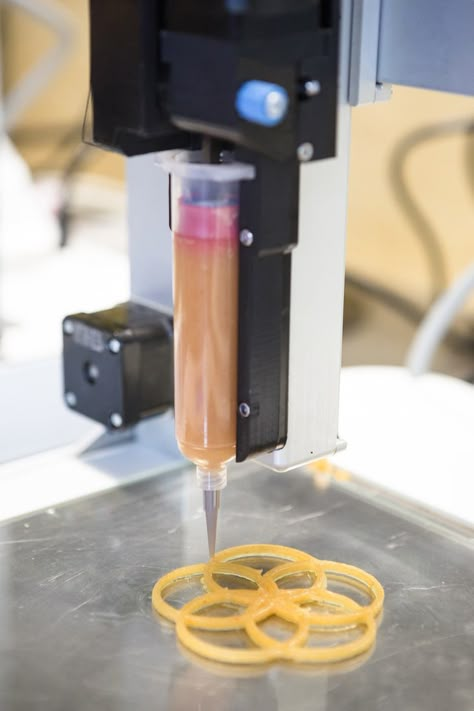
Many 3D printing materials are not food safe and might contain toxic chemicals. Only use materials to 3D print parts intended for food contact that are certified for food safety.
As may be expected, the risk of migration is higher if the food is exposed to the 3D printed part for an extended time period. In general, try to limit food contact time and take further precautions for parts that will be in contact with food for longer periods of time.
Think about the reason why you’d like to use 3D printing for a food contact item. If it’s to create custom shapes and forms, in most cases, there are indirect ways to use 3D printing to create these custom parts, for example with molding. See an example in the next section.
SLA 3D printing uses a laser to cure liquid resin into hardened plastic in a process called photopolymerization, resulting in parts that have the highest resolution and accuracy, the clearest details, and the smoothest surface finish of all plastic 3D printing technologies.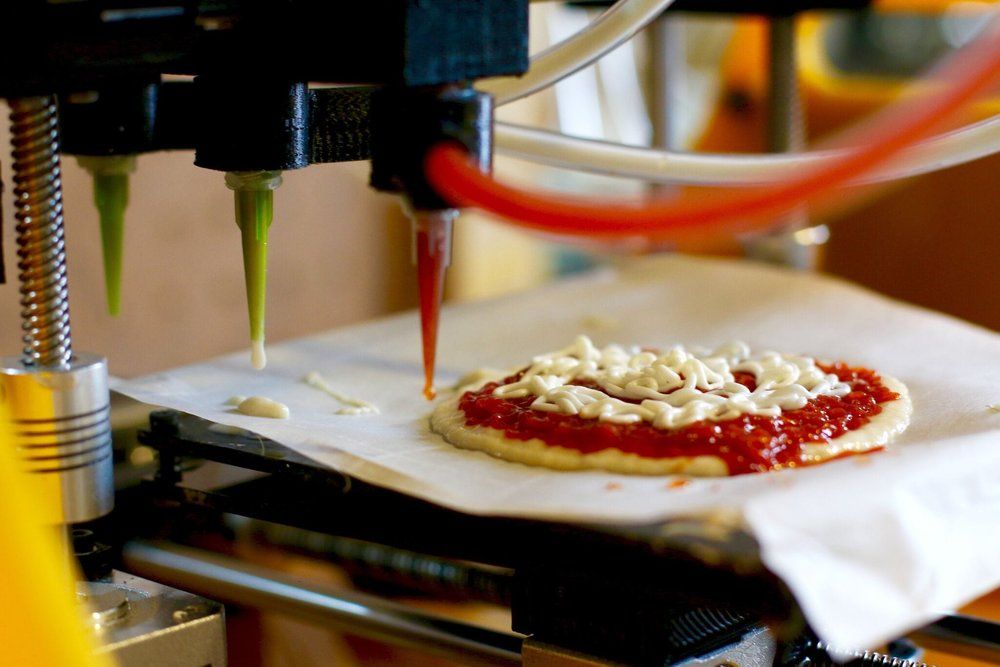
Is resin food safe? The answer is no. Substances may migrate from SLA parts which makes none of the resins and printed parts food safe by default. While some resins for dental and medical applications are certified biocompatible, that doesn’t mean that they’re food safe. These materials are certified for specific applications and should not be used for food contact products.
SLA parts have a smooth surface finish that makes it easier to use coatings to seal their surface and prevent the buildup of bacteria. The factors which affect the ultimate smoothness of a part include resin type, layer thickness, build orientation, mesh triangulation resolution of the 3D model, and the curing profile of the SLA resin. Printed parts require washing and post-curing according to the manufacturer's instructions before the coating is applied. However, note that coatings don’t guarantee food safety, as the coating may interact with the resin or degrade over time, exposing the original, potentially non-safe surface.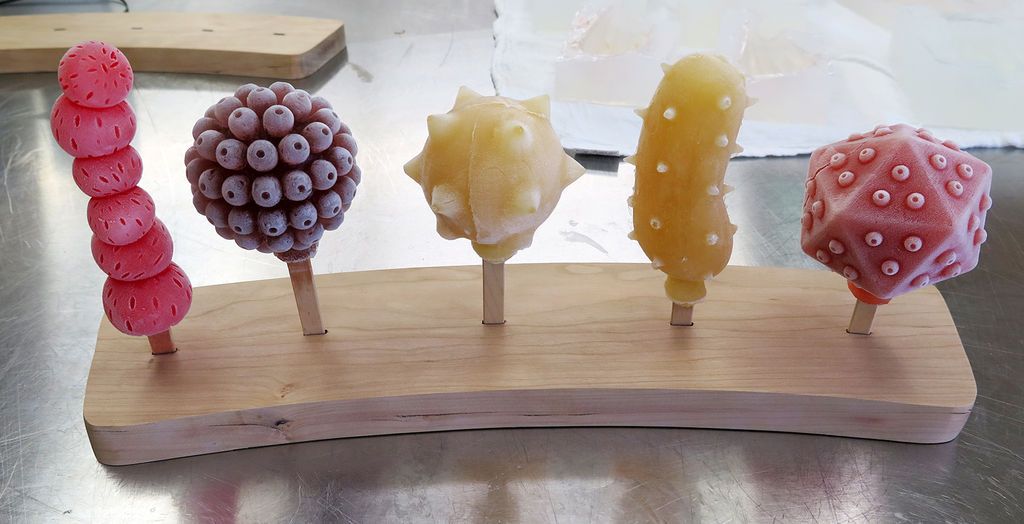
White Paper
Looking for a 3D printer to realize your 3D models in high resolution? Download our white paper to learn how SLA printing works and why it's the most popular 3D printing process for creating models with incredible details.
Download the White Paper
Creating custom molds is a common way to leverage the benefits of SLA 3D printing to produce highly detailed custom parts without having the 3D printing parts come into direct contact with food. While SLA 3D prints aren’t suitable for directly molding foods, SLA 3D printers are perfect tools to create mold negatives, which can be vacuum formed using food safe plastic.
The tools and techniques for creating 3D printed food molds are easy to master, and the results are often stunning.
3D printed molds for thermoforming and silicone enabled the creation of unique shapes and designs.
Learn more about creating molds for vacuum forming in our in-depth tutorial.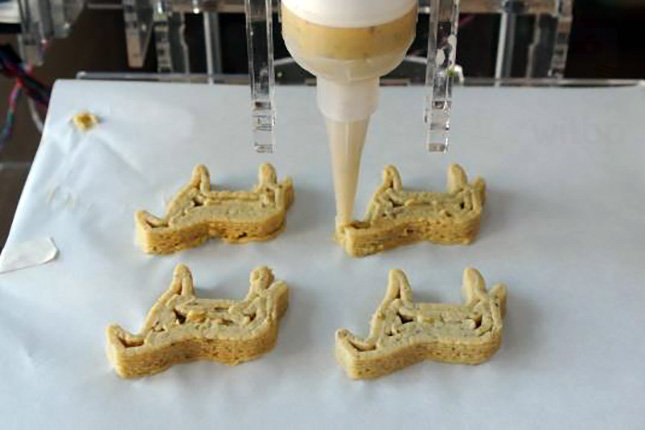
Electroplating is the process of coating parts with metal using an electric current. The process is most commonly used for decorative purposes or to prevent corrosion by creating a durable surface.
SLA parts are ideal for electroplating due to their smooth surface finish. However, as plastics are nonconductive surfaces, SLA 3D prints have to be rendered conductive by coating with graphite, conductive lacquer, electroless plate, or a vaporized coating.
Food safe metal coatings are available, but as the process involves various chemicals, making sure that the workflow is approved for food contact is the developer’s own liability.
SLA 3D printing offers the unique possibility to produce ceramic parts. After 3D printing, parts can be fired in a kiln to burn out the resin and form a true ceramic part that is strong and heat-resistant. With subsequent food safe glazing, the parts will become more hygienic and resistant to most chemicals.
A variety of food safe glazes are available on the market, but make sure to follow the manufacturer’s instructions in accordance with food safety guidelines.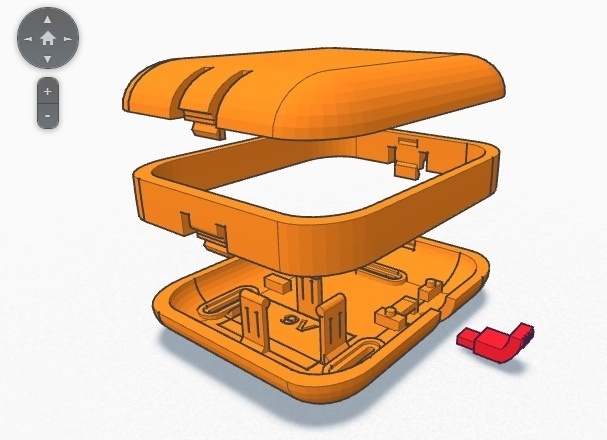
3D printing in ceramics is ideal for fabricating complex geometries that wouldn’t be possible by hand.
Learn More About Ceramics
Sample part
See and feel Formlabs quality firsthand. We’ll ship a free sample part to your office.
Request a Free Sample Part
FDM is a 3D printing process that builds parts by melting and extruding thermoplastic filament, which a print nozzle deposits layer by layer in the build area.
The extruded material is circular in cross-section, which leaves very narrow crevices in between layers with a depth directly proportional to layer height. It is recommended in any case to print at the lowest feasible layer height for food safe parts.
Consequently, the main challenge with FDM parts is avoiding the buildup of bacteria. To be truly food safe in the long term, an FDM 3D print needs to have a smooth surface. Chemical smoothing with solvents like acetone, d-Limonene, or ethyl acetate removes many of the irregularities of the print resulting in a smooth, glossy appearance.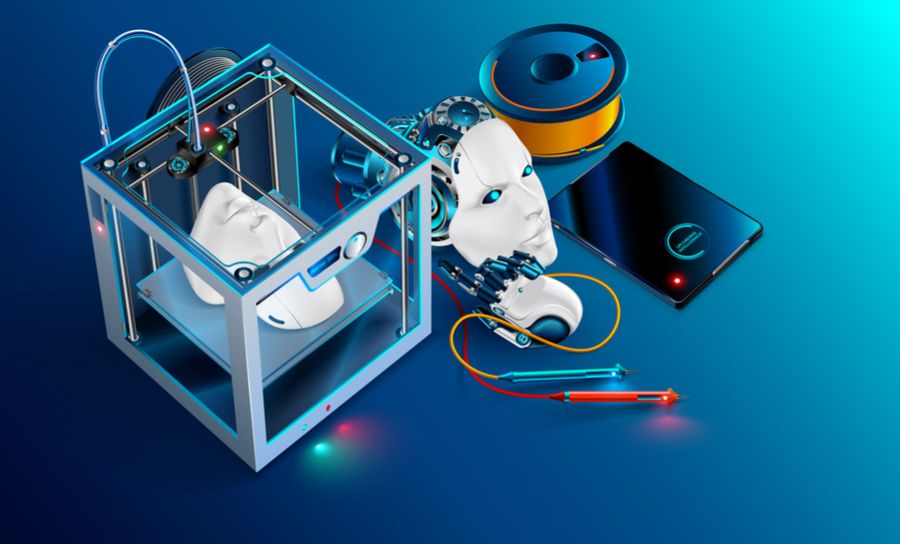 However, applying a subsequent food safe coating is still highly recommended.
However, applying a subsequent food safe coating is still highly recommended.
Layers showing on FDM (left) and SLA (right) 3D prints.
Food grade filaments do not contain any composite particles so will not wear down the nozzle into the print. Nevertheless, avoid brass nozzles that contain lead and use a dedicated stainless steel nozzle instead for all food contact items.
Always check the compatibility of your 3D printer’s components with the filament. For example, PEI is a material that is FDA compliant and offers great mechanical benefits but needs to be processed at over 300 °C, which requires a specific printer solution.
The most common questions around FDM food safety concern two popular materials. Is PLA food safe? Is ABS food safe? The answer is, it depends.
Food safe 3D printing filaments include PLA, PP, co-polyester, PET, PET-G, HIPS, and nylon-6, as well as some brands of ABS, ASA, and PEI. Having to run parts through the dishwasher rules out PET, nylon, and PLA because these plastics soften and distort around 60–70 °C.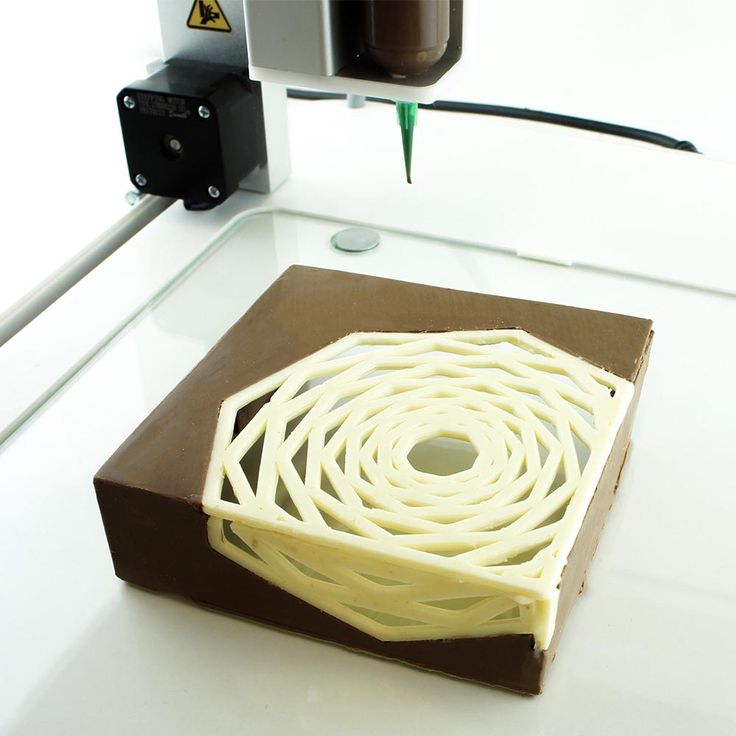 For applications involving hot liquids, co-polyester, High Temperature PLA or PEI are most suited.
For applications involving hot liquids, co-polyester, High Temperature PLA or PEI are most suited.
While not reflected in the regulations, some studies suspect that polystyrene may leach styrenes, co-polyesters might cause health concerns and that food grade FDM filaments might lose their safe status due to oxidation and thermal degradation from the printing process.
| Filament | Brand | FDA | EU | Smoothable | Dishwasher safe | Hot liquids |
|---|---|---|---|---|---|---|
| ABS | Adwire PRO | Approved | NA | Yes, acetone | Yes | Yes |
| Innofil3D | Approved except red, orange, and pink | Approved except red, orange, and pink | Yes, acetone | Yes | Yes | |
| ASA | Innofil3D | NA | Compliant | Yes | No | |
| Bendlay | Orbi-Tech | NA | Compliant | Yes, brake cleaner | No | No |
| Biocompound | Extrudr GreenTEC | NA | Compliant | |||
| Co-Polyester | Colorfabb XT | Approved | Compliant | No | Yes | Yes |
| HIPS | Easyfil | Compliant | Compliant | Yes, d-limonene | Yes | No |
| Fillamentum | NA | Compliant | Yes, d-limonene | Yes | No | |
| InnoFil3D | Approved | Approved | Yes, d-limonene | Yes | No | |
| Nylon | Taulman Nylon 680 | Compliant | NA | No | No | |
| PEI | ULTEM® 1000 | Compliant | NA | Yes | Yes | |
| PET | InnoPet EPR | Approved except red and orange | Approved except red and orange | Yes, ethyl acetate | No | No |
| Refil | Approved | NA | Yes, ethyl acetate | No | No | |
| Taulman T-Glase | Approved | NA | Yes, ethyl acetate | No | No | |
| Verbatim | Compliant | NA | Yes, ethyl acetate | No | No | |
| PET-G | Extrudr MF | NA | Approved | Yes, ethyl acetate | No | No |
| HDGlass | Approved | Approved | Yes, ethyl acetate | No | No | |
| PLA | Filaments.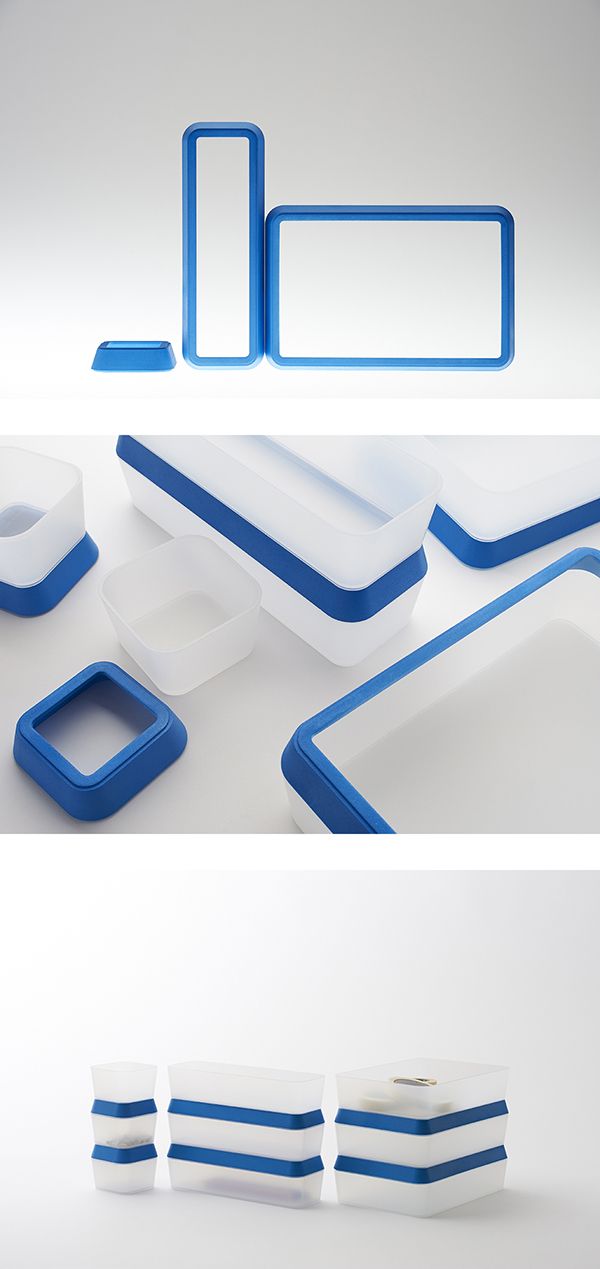 ca TrueFS ca TrueFS | Approved | NA | No | No | No |
| Fillamentum | NA | Compliant | No | No | No | |
| Innofil3D | Approved except red, orange, pink, apricot skin, grey, and magenta | Approved except red, orange, pink, apricot skin, grey, and magenta | No | No | No | |
| Copper3D PLActive Antibacterial | Approved | Compliant | No | No | No | |
| Makergeeks | Approved | NA | No | No | No | |
| Purement Antibacterial | Approved | Approved | No | No | No | |
| PLA-HT | Makergeeks Raptor | Approved | NA | No | Yes | Yes |
| Makergeeks Raptor | Approved | NA | No | Yes | Yes | |
| PP | Centaur | Compliant | Compliant | No | Yes | Yes |
| InnoFil3D | Approved | Approved | No | Yes | Yes | |
| Nunus | Compliant | Compliant | No | Yes | Yes | |
| Verbatim | Compliant | NA | No | Yes | Yes | |
| SBS | Filamentarno | NA | Approved only in Russia | Yes, d-limonene | Yes | Yes |
Selective Laser Sintering is a 3D printing process that use a high-powered laser to fuse small particles of polymer powder.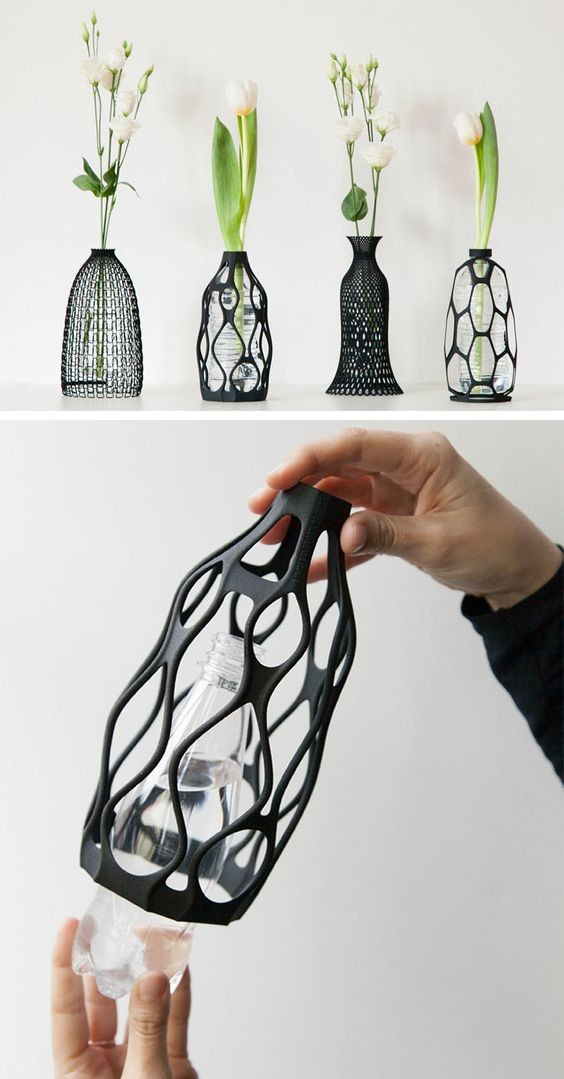 The most common material for laser sintering is nylon, a popular engineering thermoplastic with excellent mechanical properties.
The most common material for laser sintering is nylon, a popular engineering thermoplastic with excellent mechanical properties.
While some SLS powders are graded food safe, the particles on the surface of printed parts might not fuse completely, resulting in parts that are inherently porous and do not deal well with moisture and mold growth. Even though the nylon 12 powder can be steam cleaned in an autoclave, it is best to coat SLS parts with food safe coatings to seal their surface.
A common post-processing step for SLS parts is dying. But note that after an SLS part has been dyed, the dye may leach into the printed part which renders the item not food safe.
White Paper
Looking for a 3D printer to create strong, functional parts? Download our white paper to learn how SLS printing works and why it's a popular 3D printing process for functional prototyping and end-use production.
Download the White Paper
Food safety with 3D printing is not a simple matter that will boil down to a clear yes or no answer.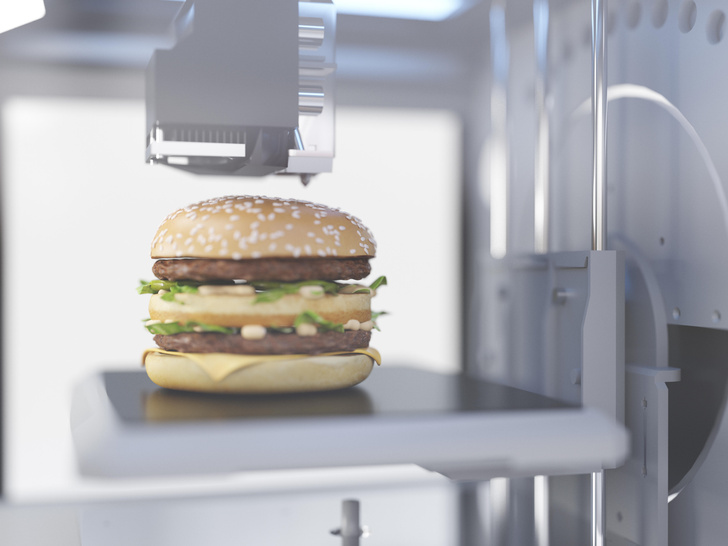 Producing 3D printed parts for food contact items requires careful consideration of the risks depending on their intended use.
Producing 3D printed parts for food contact items requires careful consideration of the risks depending on their intended use.
For further information on food safety and 3D printing, we recommend reading the following:
- FDA Regulations CFR 21
- EU Guidelines 10/2011
- Risk Assessment of 3D Printers and 3D Printed Products
- The Tricky Business of Choosing Plastic for Food Contact Applications
Food-safe 3D printing: Which materials are compatible?
3D Learning Hub
See all categories
Contents:
- Introduction
- Food 3D printing: Evolutions through the last decade
- Food safe 3D printing: Why it is so important?
- What are the food safe materials that you can use?
- Other tips for 3D printed objects food related
Introduction
Food 3D printing: Evolutions through the last decade
Over the last decade, the link between food and 3D printing became stronger and stronger.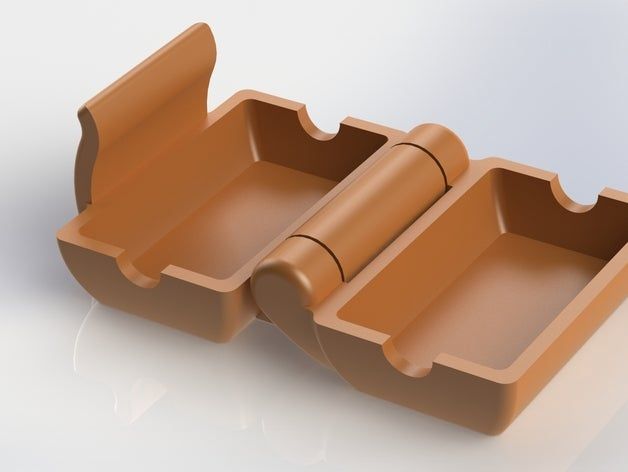 We saw it with the development of incredible food projects, such as Novameat’s 3D printed meat, many 3D printing chocolate projects like byflow, but also experiments of food printing made by NASA for astronauts. Even Barilla, the pasta company, developed a pasta 3D printer to work on the geometry of their pasta.
We saw it with the development of incredible food projects, such as Novameat’s 3D printed meat, many 3D printing chocolate projects like byflow, but also experiments of food printing made by NASA for astronauts. Even Barilla, the pasta company, developed a pasta 3D printer to work on the geometry of their pasta.
Researchers are pushing the limitations of 3D printing to create a variety of food using 3D printers.
But the relationship between food and 3D printing doesn’t stop there, as additive manufacturing can also be useful to print a variety of accessories for the food industry. Manufacturers can actually use 3D printers to implement more sustainability in their process, work on impressive shapes and geometries, to 3D print molds, prototypes or work on actual finished products.
Food safe 3D printing: Why it is so important?
Additive manufacturing for food
Yes, everything is 3D printable, and if it is possible to print impressive technical devices for the aerospace industry, it might also be possible to use a 3D printer to manufacture regular kitchen utensils for instance.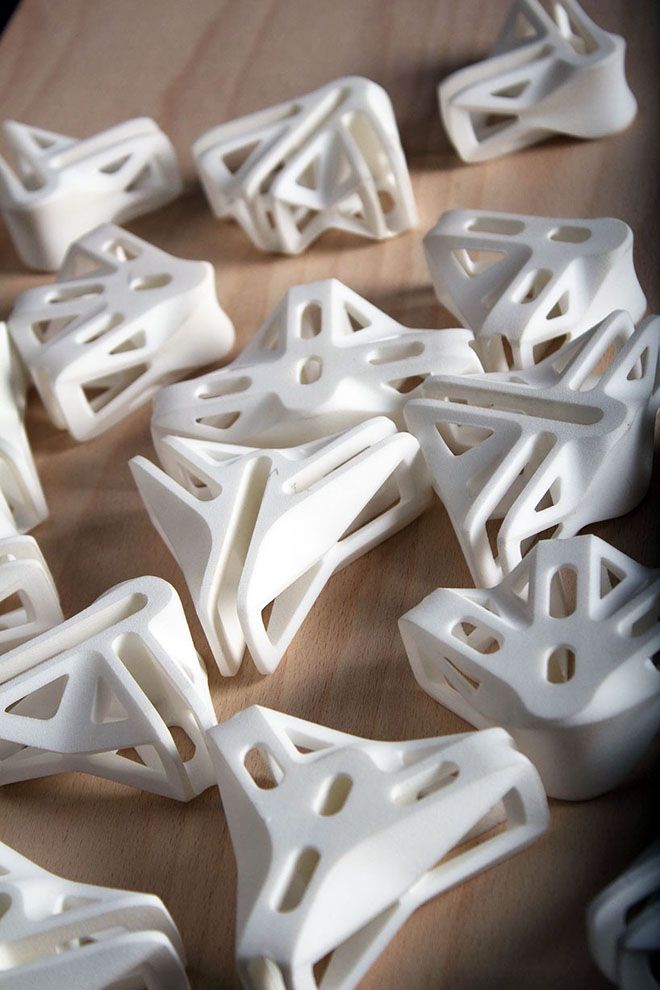 You may want to create custom-made objects for kitchens. No matter what is your project, if there is a contact with food involved, the materials used have to be totally safe. First of all, it has to be safe for you, but also for the food in order to avoid food poisoning.
You may want to create custom-made objects for kitchens. No matter what is your project, if there is a contact with food involved, the materials used have to be totally safe. First of all, it has to be safe for you, but also for the food in order to avoid food poisoning.
To take another example, when 3D printing for medical purposes, you have to use biocompatible materials, that will be totally safe for the human body, that won’t be harmful to health. For any medical use, you have to choose your material wisely. It is the same for a gastronomical use.
The use of 3D printing tends to widespread in a lot of different industry. It is actually a great solution to make food containers but also more personal objects with a great design works and a custom-made aspect.
Mind the risks
Here are the main reasons why you need to use food-safe 3D printing materials or 3D printing filament:
Growth of bacteria
When 3D printing an object that will be in contact with food, the last thing that you want is the growth of bacteria that could eventually contaminate you or anybody else. To avoid the growth of bacteria, you need a smooth material. And even if the object is quite smooth, you will have to pay attention to the design. Indeed, if the food can get stuck in small parts of your design, or simply in the layers, it will encourage the growth of bacteria.
To avoid the growth of bacteria, you need a smooth material. And even if the object is quite smooth, you will have to pay attention to the design. Indeed, if the food can get stuck in small parts of your design, or simply in the layers, it will encourage the growth of bacteria.
Chemical products from the printing process
A mix of heat and chemicals are actually needed to get a 3D printed objects, that is why you have to be careful on technologies and materials used to 3D print your project, especially if the part will eventually touch food. Toxic particles present during the 3D printing process could have health effect if ingested. It would a shame to be poisoned by a coffee cup!
Chemical directly in the materials
More than 3D printing processes, some materials are made of toxic chemicals ABS is particularly unsafe, as there are toxic chemicals in the filament! Some materials such as ABS have a high level of ultrafine particles, according to a study by Illinois Institute of Technology and the National Institute of Applied Sciences in Lyon, France.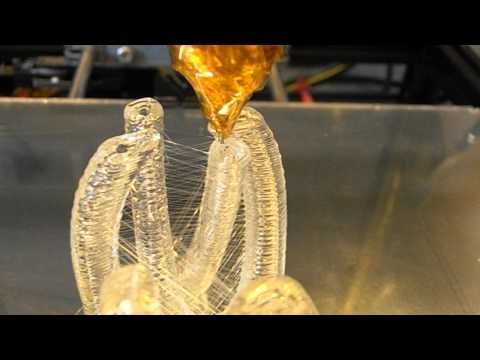 As the ingestion of these kinds of particles can lead to some health problem, we do not recommend you to use them. That is actually a factor that you have to take into account while 3D printing a part that will be in contact with food.
As the ingestion of these kinds of particles can lead to some health problem, we do not recommend you to use them. That is actually a factor that you have to take into account while 3D printing a part that will be in contact with food.
https://inhabitat.com/philippe-malouin-3d-prints-bowls-and-plates-using-sugar/
What are the food safe materials that you can use?
Choosing the right materials
Don’t be alarmed, 3D printing safely for food is completely possible, you just that you have to pay attention to the materials and 3D printing techniques that you want to use. Be careful: using a food-safe 3D printing material is great, but pay close attention to also use food-safe sealant if you need to assemble your parts to create your project. Here are a few examples of 3D printing materials that you can use to manufacture object in contact with food:
-
Ceramics
Ceramic is amazing to create food safe and resistant object, even using 3D printing. If you are looking for a food safe, watertight 3D printing part, think about using ceramic to manufacture it! Cups, plates or even saucers are 3D printable without any toxic chemicals. It might be the most coherent option to 3D print your items.
If you are looking for a food safe, watertight 3D printing part, think about using ceramic to manufacture it! Cups, plates or even saucers are 3D printable without any toxic chemicals. It might be the most coherent option to 3D print your items.
PLA is a 3D printing material that is safe for food contact. With plastic injection molding, this material is used to make packaging. It is a perfect material to 3D print project that will not be exposed to the heat of to a too powerful mechanical constraint. But if you want to create litte objects with this biodegradable plastic, such as cookie cutters, PLA filament seems to be a perfect choice.
PolyEthylene Terephthalate is a common material used to create plastic bottles or other classic food containers. It is known to be totally food safe! One of the main advantages of this material is that it can be totally recycled, often recycled at an industrial scale. To conclude, you can just create whatever you want, small parts to the whole 3D printed objects, but you just have to use a food safe filament or a food safe material. Obviously, it will be better for you, and for your customers!
Obviously, it will be better for you, and for your customers!
Other tips for 3D printed objects food related
What material will meet your expectations?
Choosing the right materials for your project can be a real puzzle. But once you’ve found it, it will really worth it. The choice of the material is essential, allowing your parts to meet perfectly your expectations and the expectation of your future customers. Regarding the properties of some materials, it could even improve the quality of the parts. Do you need a lightweight material? A resistant one?
https://medium.com/@3dhubs/how-kitchenware-startup-misen-used-3d-printing-to-develop-a-chef-s-knife-and-raise-over-1-million-6bece4506c94
Choosing the material that will resist a daily use
Indeed, aside from the food safety aspect, you have to use a material that will allow the object to be usable daily. Does your object need to be heat resistant? Will it be confronted with hot water, a microwave? It would be a shame to get a final object that could be deformed while exposed to warm water.
Moreover, you will certainly want to wash your parts if you are planning to use it with food. Can you wash this material? If you can’t put the object in the water to wash it, it could be quite complicated. Also, don’t forget to be sure that your object is dishwasher safe before putting it inside the machine!
We just told you about the materials that are considered safe for food. But there is also something that you don’t have to reflect: the food safe coating. Using food-safe materials is great, but using a food-safe coating with it, or no coating, is obviously better!
You have a question about food safe 3D printing and the food safe material? Don’t hesitate to contact our sales team to answer all your questions.
What foods could be 3D printed?
Can 3D printed food be eaten?
Related Topics
- Return to Top
Get the latest 3D printing news delivered right to your inbox
Subscribe to our weekly newsletter to hear about the latest 3D printing technologies, applications, materials, and software.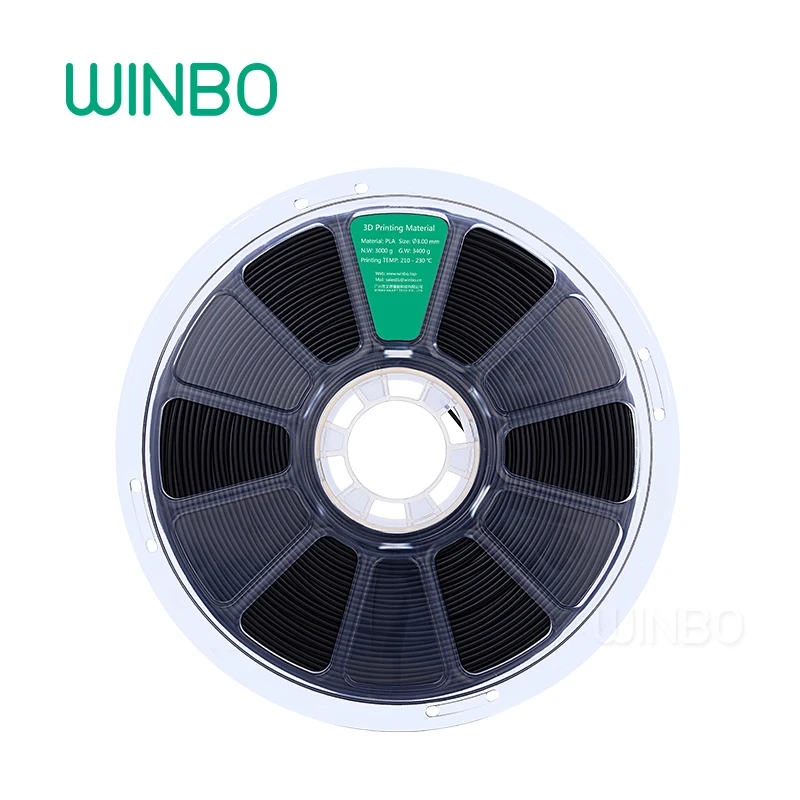
Food grade plastic for 3D printing. Safety filament, filament
For each area in which 3D printing is used, suitable materials are currently selected. ABS, PLA are definitely out of competition. However, they are completely unsuitable for printing products that will come into contact with food. For this purpose, special, food-grade plastic is needed. This is exactly what PETG filament is.
Requirements for food-grade plastics:
- non-toxic; nine0010
- chemical safety;
- inert to food products, including food acids.
In this section, 3DMall has collected representatives of this family of filaments - food grade plastic for 3D printers. You can create containers, packaging, kitchen tools and even utensils! Expand the scope of 3D printing in your everyday life with PETG.
What is PET-G?
PETG is a well-known plastic that can be found at home and on store shelves. As a filament, it has been used relatively recently, but has already managed to earn trust. From a chemical point of view, PETG is glycol-modified polyethylene terephthalate. nine0003
As a filament, it has been used relatively recently, but has already managed to earn trust. From a chemical point of view, PETG is glycol-modified polyethylene terephthalate. nine0003
PETG properties:
- wear resistance;
- chemical resistance;
- strength, including impact strength;
- wide temperature resistance
- safety;
- non-toxic.
Most importantly, this substance has a certificate that confirms safety and gives permission for contact with food.
PETG from the point of view of 3D printing
Working with PETG plastic is not difficult. In many ways, it is similar to working with ABS and PLA. All the advantages inherent in ABS are also characteristic of PETG. Material different:
- good interlayer adhesion;
- versatility;
- Compatible with most FDM and FFF 3D printers.
The disadvantages of the material include low UV resistance. The surface of products made of food-grade PETG plastic is very easily scratched. From the point of view of 3D printing, one should also note the difficulty of removing supports and post-processing by chemical methods, due to the chemical resistance of the material. nine0003
The surface of products made of food-grade PETG plastic is very easily scratched. From the point of view of 3D printing, one should also note the difficulty of removing supports and post-processing by chemical methods, due to the chemical resistance of the material. nine0003
What can be printed with food-grade PETG
This filament has a very wide range of applications. In principle, it can be called universal, but most often they are printed:
- dishes;
- food containers;
- molds for biscuits, dough, chocolate, etc.;
- parts for conveyor lines for food products;
- parts of equipment that comes into contact with food;
- Cutlery and parts of kitchen utensils; nine0010
- parts of equipment for the food industry;
- food packaging.
PETG is a filament that is resistant to normal humidity conditions. Therefore, when printing with it, there are no problems, no additional drying is required. But, manufacturers still recommend storing plastic threads in a closed bag with silica gel.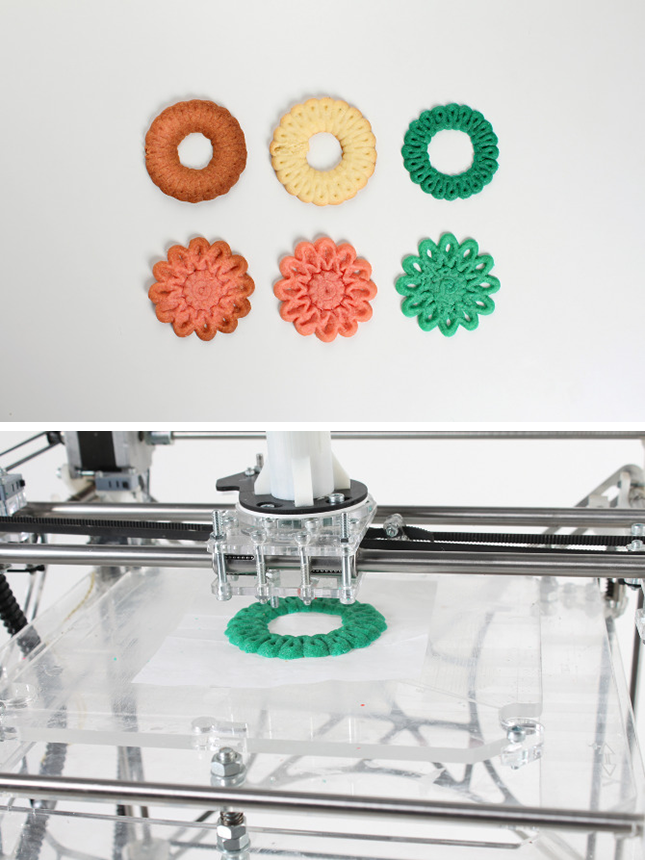
In the 3DMall assortment you will find everything you need for 3D printing. If you have any questions, our staff is always ready to answer them! nine0006
Food industry. Order 3D printing from food grade plastic.
If you think that the food industry and 3D technology are incompatible, then you are deeply mistaken! In fact, this industry uses the services of 3D printing no less than others. With the help of culinary 3D printers, unique sweets are created with complex geometry. For example, with chocolate on a special 3D printer, you can even print a portrait. However, this is not all!
Uniqueness, exclusivity, individuality play a huge role in the modern world — 3D modeling is able to make practically any object unique, and when it comes to food products, it is first of all shapes and packaging. Due to the high cost of 3D printers, not every company can afford the equipment, which can be said about small cookery. There is a way out - to use the services of 3D printing. nine0003
nine0003
Our company provides printing services using the most popular and demanded technologies. For the food industry, we can offer the use of safe plastics. Affordable prices and high quality printing we guarantee.
One of the applications of 3D printing in the food industry is the creation of exclusive molds for chocolate, dough and liquid food products. Using the printer, you can print forms for cutting cookies, gingerbread, printing on them. Similar forms can be made for confectionery - sweets, chocolate. This approach allows making the production of confectionery and food products more individual. For example, you can make products for certain holidays, events, etc. And restaurants can get the opportunity to brand bread and confectionery products. All this allows you to raise the image in the eyes of the consumer. nine0003
Nowadays, many people earn money by baking cakes. Talent allows chefs to create real masterpieces, and printing can help them create templates for cutting out elements from dough, mastic and chocolate.